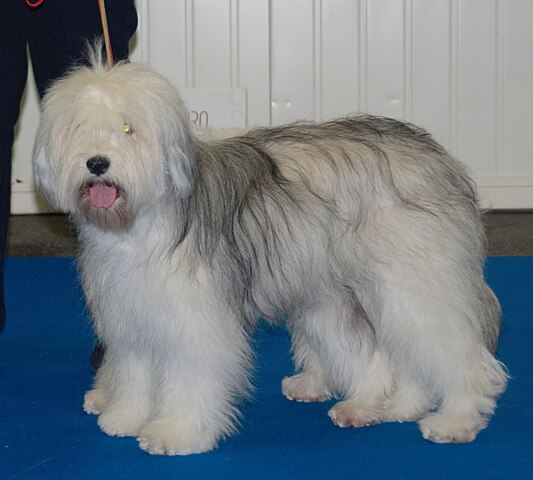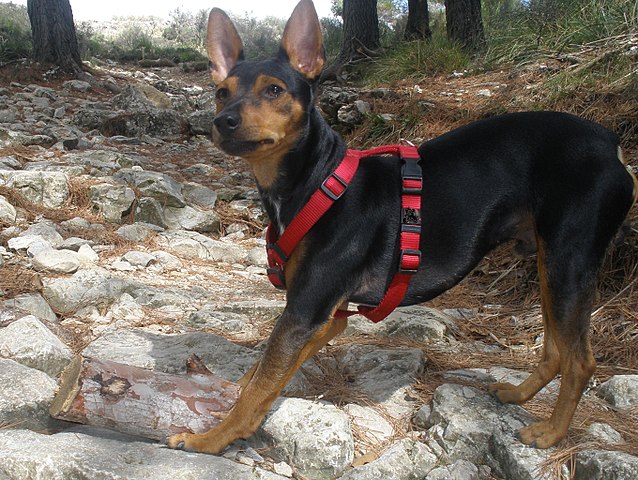The Japanese Terrier became a breed around the 1930’s and originated from Smooth Fox Terriers, small pointing breeds and native Japanese breeds. This is a toy terrier breed, with more of an emphasis on the “toy” than the terrier because of the fact that they were used primarily for companionship. Although tiny in stature (weighing 5-10 pounds and standing no taller than 13 inches), this is an inquisitive little dog with a strong will and a somewhat standoffish temperament towards strangers. He definitely has a “terrier temperament” but with a cautious and sensitive side. Toy terrier breeds, such as the Japanese, tend to have mixed qualities of both groups.
The JT is very intelligent and active, so obedience is a good outlet for both brain and body. This versatile breed is also a good choice for those who want to compete in dog sports. While he can be easy to train at times, other times may find him challenging or testing his limits. It’s important to utilize both praise/positive reinforcement as well as firm yet fair corrections when needed. This is the type of dog that will take a mile if given an inch! Furthermore it is best to start training while young. An older dog can definitely be trained although the difficulty will almost always go up, particularly in dogs that have gotten set in their ways. This breed is best owned by people with terrier experience and/or those who won’t constantly spoil the dog for no reason.
Japanese Terriers are a rare breed although they have been recognized in the UKC for awhile now and were just recently recognized by AKC’s FSS program. As would be expected, most individuals live in Japan although it is a rare breed even there. Other names for the breed include the Nippon Terrier, Nihon Terrier and Nihon Teria. If one is interested in acquiring a JT, it may take some extra hoops to jump through but the reward will definitely be worth it! They work well for experienced owners as well as first-time owners who are willing to put in the work (particularly in terms of understanding how to work with their terrier temperament). A calmer breed than most terriers, they are great for single people as well as families with older children.
Japanese Terriers tend to get along with other dogs, cats and children, but his tiny size dictates that an owner must be careful. Children should be older and well-behaved, and dog playmates should ideally be a size that won’t accidentally harm this little guy. Use common sense! With other people, Japanese Terriers are aloof. If someone comes to the door, he won’t hesitate to sound the alarm, which makes him an excellent watchdog. Otherwise he isn’t normally known for being a yappy dog (unless one lives in an area with people constantly coming and going – take note, apartment dwellers). With his owner, he is affectionate and happy, although more of a one-person dog who can become possessive of “his person” without proper training.
The average lifespan for the JT is 12-13, with many living up to 15. The long life of this dog makes him a big commitment, and not one that should be taken lightly! A potential owner should make sure their life is compatible with this breed before purchasing. For instance, he doesn’t do well with extended periods without his owner so if one works all day, or plans on being at work all day in the future, this breed might not be the best choice. This loyal and devoted companion wants to be with you as much as possible, possibly to the point of being demanding (don’t feed this behavior). He also doesn’t do well in environments that are constantly loud or stressful.
The JT does require regular exercise although his size means that a little bit of walking for you will go a long way for him! This is a medium-energy breed. After the daily walk he is usually content to lay on his dog bed or the couch and chill out. Some may need two walks a day, this depends on the individual dog, your/his lifestyle and size of your home & yard. Walks or other forms of exercise should be done on a leash or in a fenced-in yard as he can be prone to wandering or running gleefully away – at least until extensive off-leash training has been given!
The coat of the Japanese Terrier is smooth and fine, and it is very easy to care for. They shed very little, although take note that they are not hypo-allergenic. Coat color is often tricolor – with a white body and a tricolored head, although black/white or tan/white is also accepted. These tiny guys do need a sweater or dog coat in cold weather as they don’t tolerate frigid temperatures well. Overall this is an excellent companion that is easy to care for in many ways, but like all breeds does require a compatible home.




